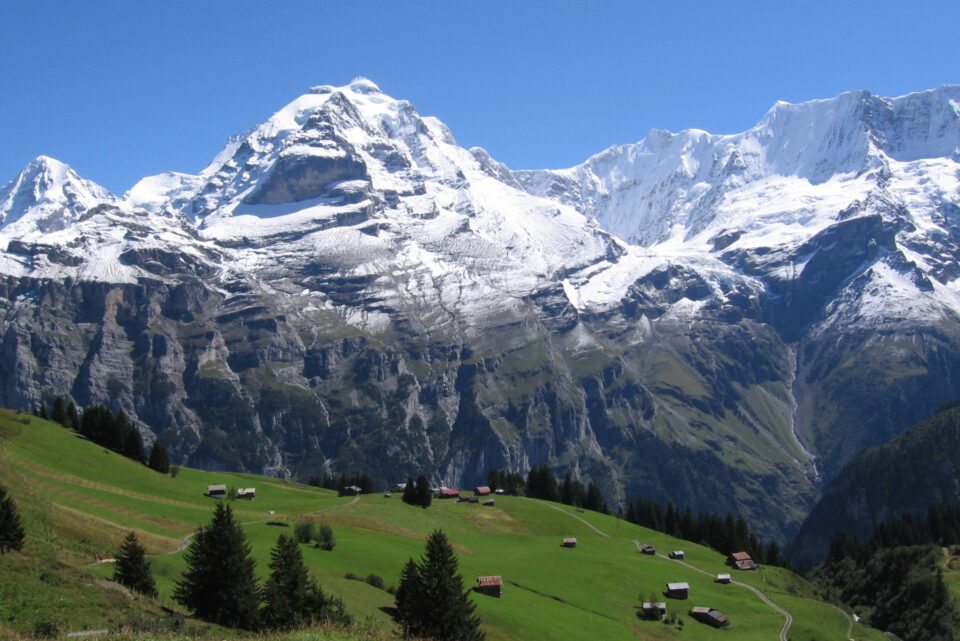The Jungfrau Mountain is one of the highest peaks in Switzerland, the first part of the Alps listed as a UNESCO World Heritage Site. Here, on the border between the cantons of Bern and Valais, more than 4 km meters above sea level, you can enjoy a magical view of the neighboring mountains and glaciers, a unique railway, unusual museums and interesting walking tours.
How to get to the top of the Jungfrau, what surprises await tourists and how much will such a trip cost? See the answers in this article.
Jungfrau Mountain in Switzerland: home information
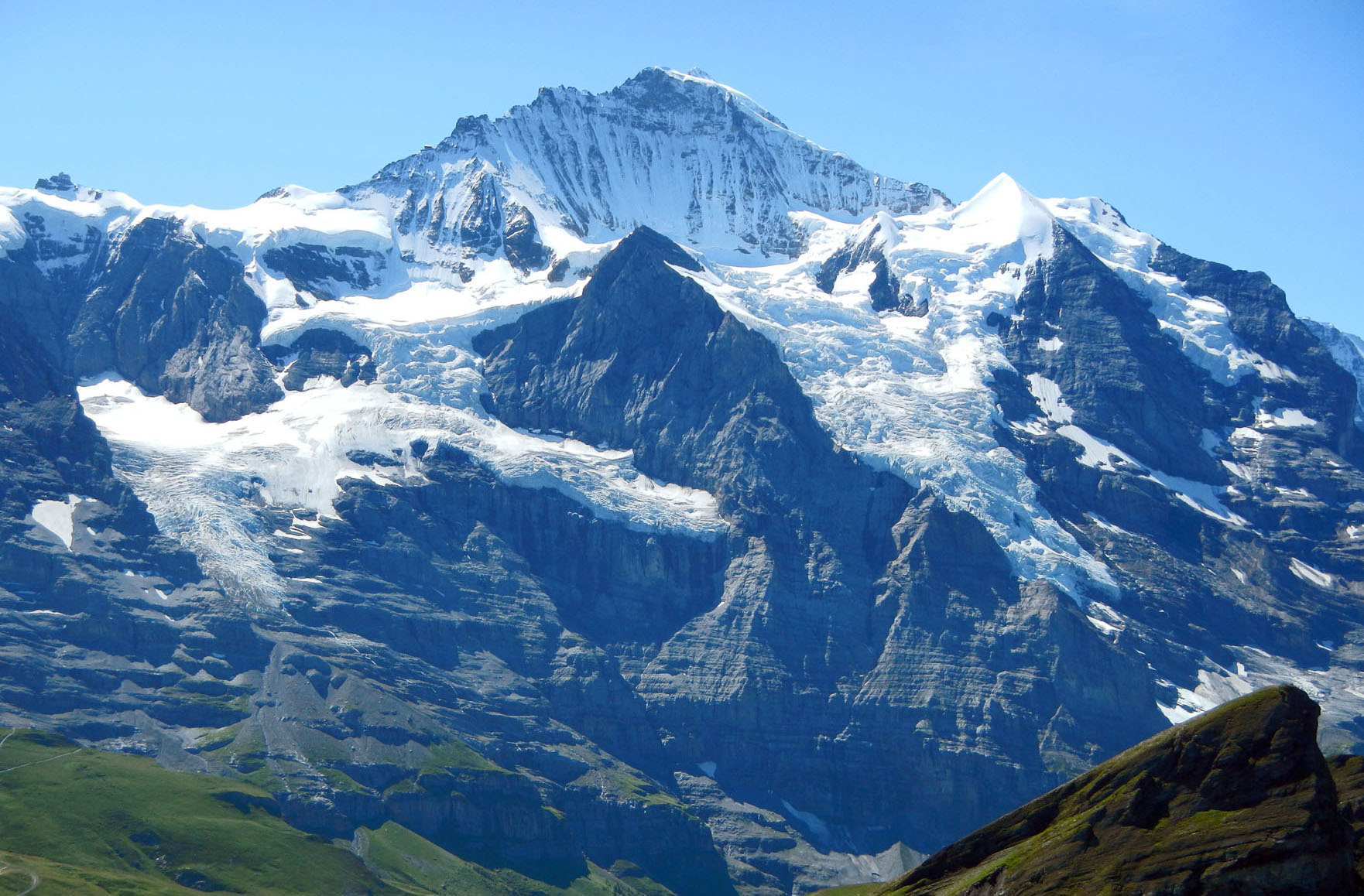
The Jungfrau mountain is part of the Bernese Alps and is the highest peak of this complex (4158 meters). Its landscapes are very diverse: on the almost snow-free western side of the mountain is the second highest straight steep slope of the Alps, in the south and east it connects with the largest territory in Europe covered with ice, and in the north it is “covered” by many small mountains (Wengen-Jungfrau, Schneeborn, Silberhorn) and the famous Kullauenen and Silberhorn glaciers. Giessen.
Interesting fact! Jungfrau, along with the nearby Schwarzmjonch Mountain, which means “Black Monk”, are the heroes of an ancient legend about the unrequited love of a priest.
Mountain Climbing
The first ascent of the Jungfrau was made in 1811 by Johann Rudolf and Jerome Meyer and two guides from Lechenthal. Their tour is still a regular itinerary today. The Jungfrau peak is relatively easily accessible for mountain climbers, but fatal accidents happen again and again on the mountain. The usual route for climbing today leads from Mönchsjochhütte (3,657 m) through Rottalsattel and the south-eastern ridge to the mountain, this tour takes about five hours. Further surveys are also possible through the north-west or north-east ridges or through the inner Rottal ridge.
What to see at the top
The Jungfrau Mountain in Switzerland is the third highest mountain in the Bernese Alps. However, its peak is unique not only because of its height, but also because of the attractions located there, the most popular of which is the railway.
Jungfrau Railway
The Jungfrau railway (Switzerland) is the highest railway in all of Europe. Its total length is 9 km, 7 of which trains pass through a tunnel cut through several rocks. From the first to the last station, the height difference is 1400 meters, and the entire road takes about an hour.
The route of the Jungfrau railway was originally planned to reach the summit, but then ended due to financial difficulties with the Jungfraujoch terminus at an altitude of 3454 meters.
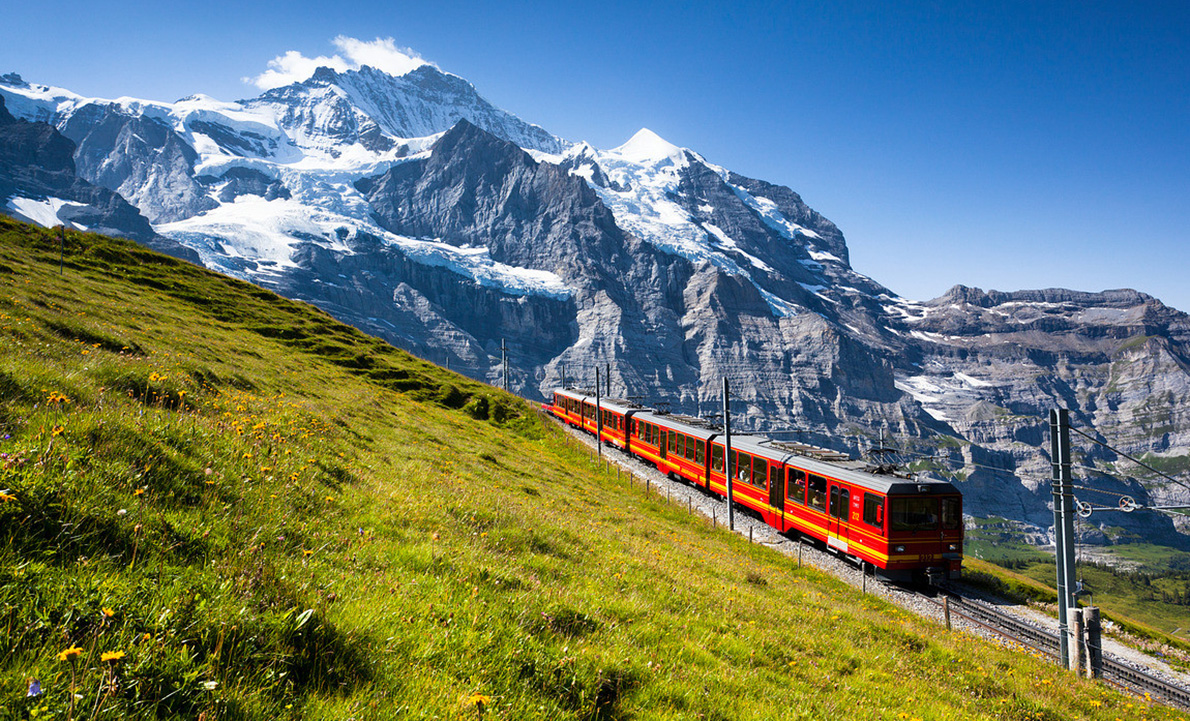
Spring and summer are the most suitable time for a trip to the Jungfrau. It is at this time that passengers have a chance to enjoy the view of the snowy mountains, slowly replaced by green stands of grass and flowers.
A tip for mountain walkers! At almost every Jungfrau station, you can go on an independent walking tour – right from the exit of the station, signs will show you the right way to the nearby beauty spots.
The train departs from Interlaken Ost station, stopping in Grindelwald, where there is also a lot to see. The ticket price is 118 CHF one way.
Sphinx Observation Deck
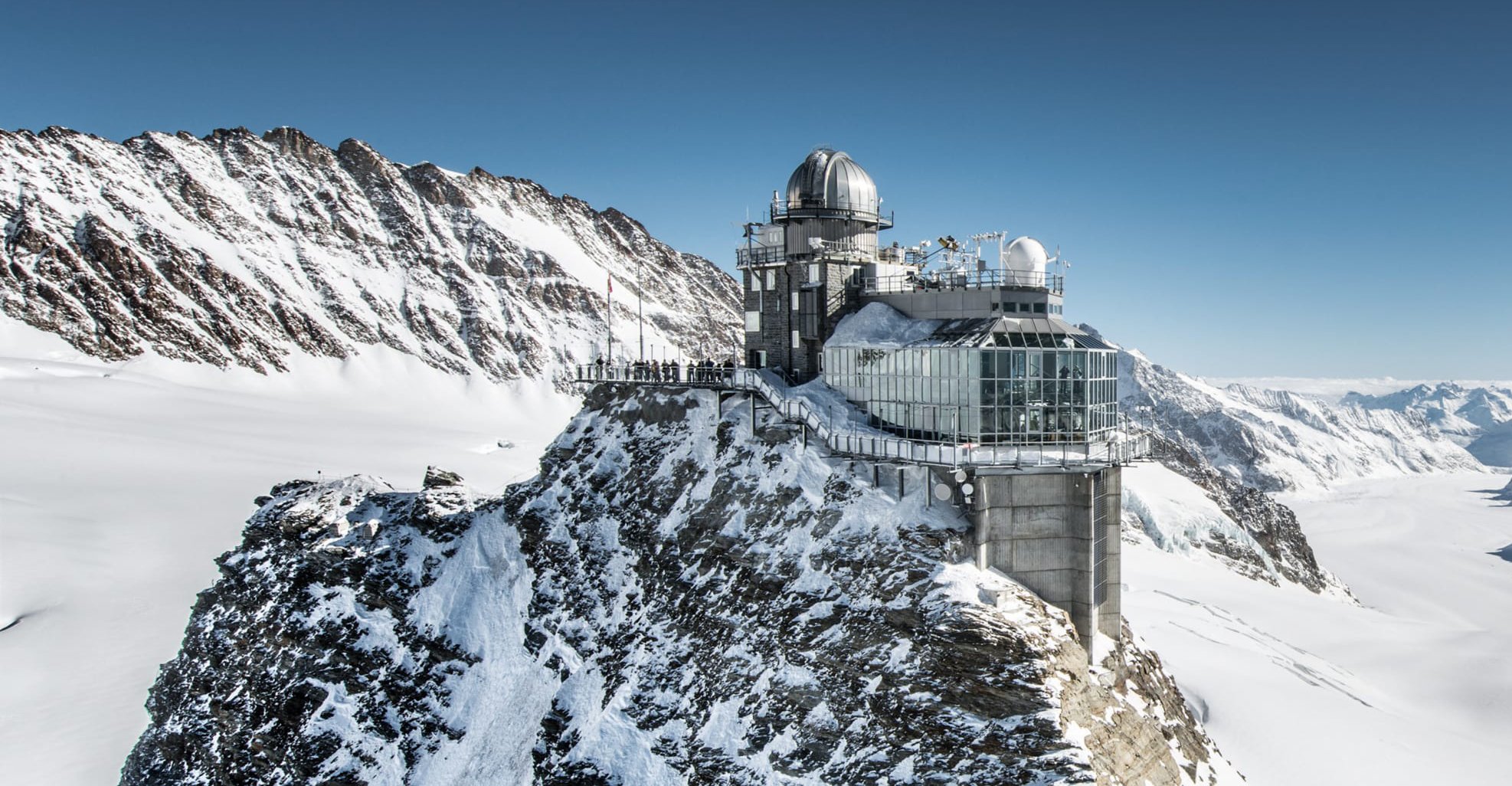
Climbing the Jungfrau for beautiful photos? Especially for you, the Swiss government has built an extensive observation deck on this site, from which you can enjoy panoramic views of the mountain landscape. In clear weather, the Sphinx offers such a good view that you can even see Mont Blanc, located in France.
Ice Palace
Do you want to go back 540 million years to the Ice Age? Or imagine yourself as a resident of the North Pole? Even if the described wishes do not coincide with yours, be sure to visit the Jungfrau Ice Palace-a network of unusual tunnels laid in the huge Aletsch Glacier. Its total area exceeds 1000 m2, and all the exhibits presented inside are made of ice. An eagle, a penguin or a bear, as if just turned into ice, look quite natural. Even at minus three degrees Celsius, they melt.
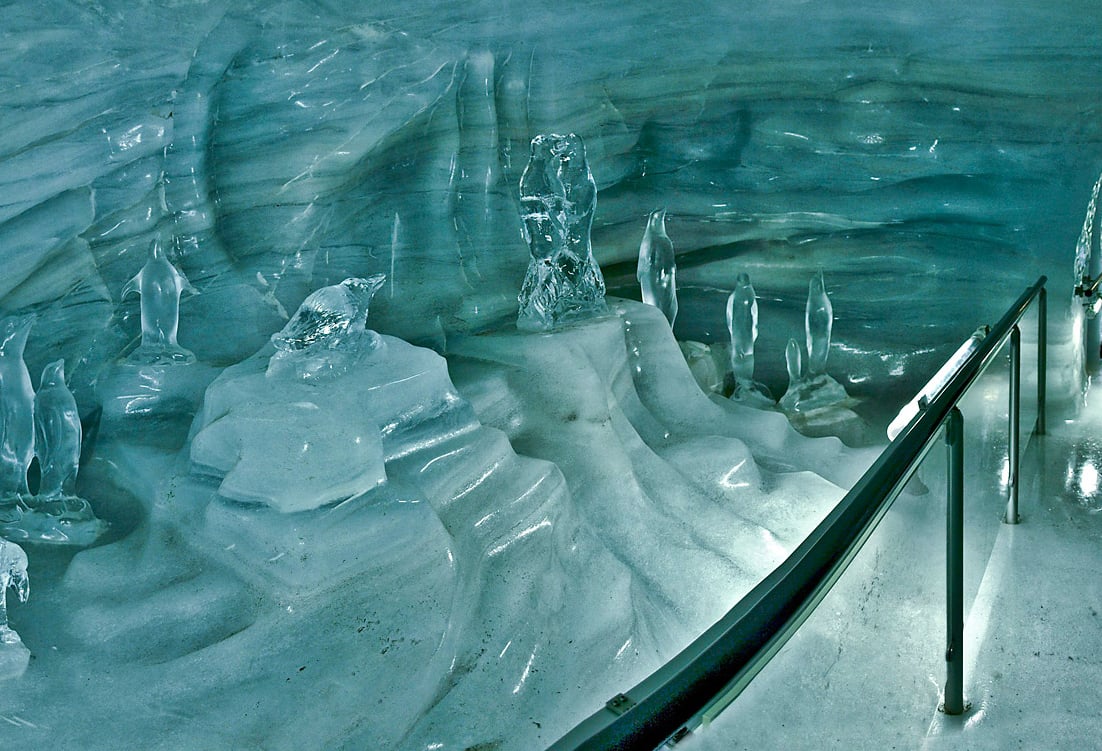
The Ice Palace is located at the last station of the Jungfrau railway. Admission is free.
Entertainment and active recreation
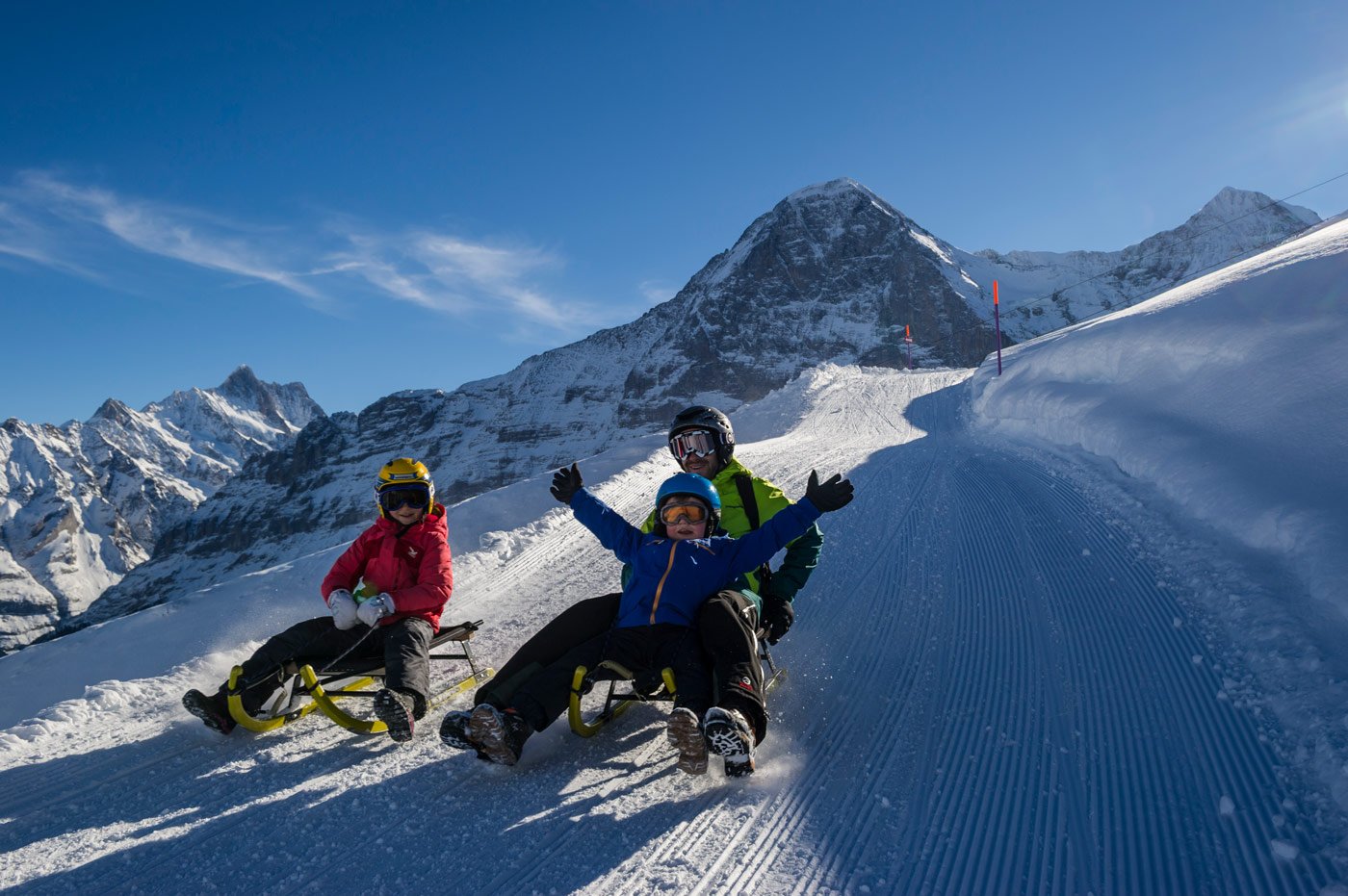
For children and adults, there are several descents on the top of the Jungfrau, where you can rent a sled and immerse yourself in your childhood for a couple of hours. In addition, frozen tourists can warm up in a restaurant with the immodest name “Top of the Europe”, buy delicious Lindt chocolate in the highest store in Switzerland, or buy a few gifts to their relatives in a souvenir shop. Other available entertainment options.
- Mountain cart riding is a cross between go-karting and sledding. It descends from the mountain in almost any terrain and is safe, convenient, and also suitable for children from 135 cm tall.
- Trottibike ride. Trottibike has inherited the best features of a scooter and bike. You stand straight on the wide running board and roll pleasantly even on uneven surfaces thanks to the shock-absorbing fork and large tire with tread.
- Flying on a glider attached to a cable is somewhat similar to a zipline, but it has its own characteristics.
How to get to Jungfrau mountain from Interlaken
A trip to the top is a real quest for the traveler. In order to get on the Jungfrau, you first need to get to the resort town of Interlaken, and then there are 2 possible routes.
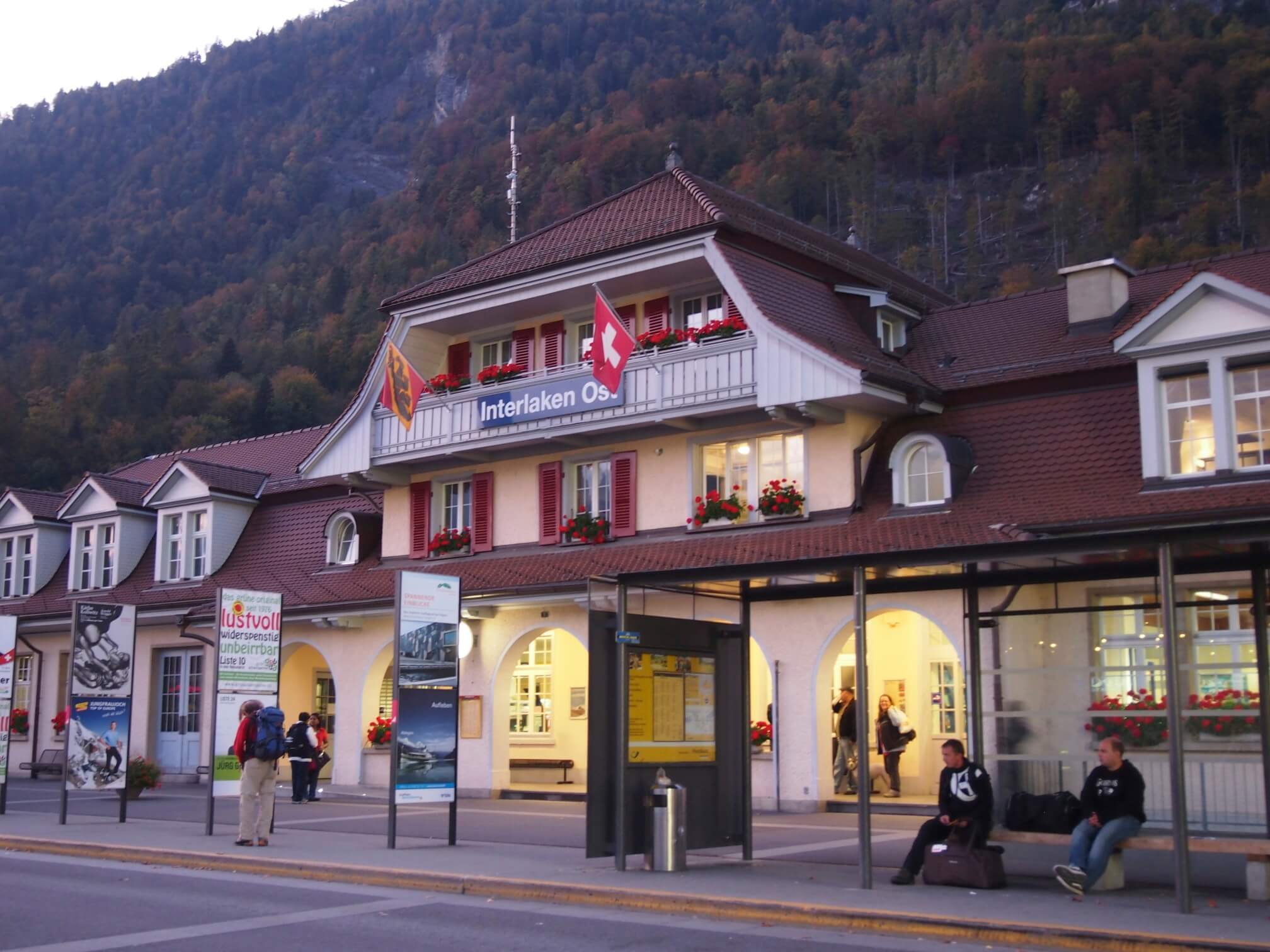
- Interlaken Ost — Lauterbrunnen — Kleine Scheidegg — Eigergletscher — Jungfraujoch. The ticket price between the end stations is 117.6 CHF. The total travel time is 2 hours and 6 minutes.
- Interlaken Ost-Grindelwald Terminal – Eigergletscher (cable car ride) — 5 minutes walk to Eigergletscher-Jungfraujoch station. In this case, the journey will take 1 hour and 36 minutes. The ticket price is the same as for the first route.
You can buy any ticket on the official website of Swiss railways — www.sbb.ch.
Life hack! To diversify your journey, go uphill on one route and downhill on another, for example, replacing Lauterbrunnen station with Grindelwald. The price and travel time will not change.
Tips from travelers

- This height is not recommended for people with diseases of the respiratory and cardiovascular systems, pregnant girls and small children. In this area, oxygen is 16% less than our body is used to receiving, so even healthy tourists, climbing the Jungfrau railway, often feel unwell.
- If you suddenly feel the symptoms of mountain sickness (nausea, dizziness, rapid fatigue, headache) – refuse to continue climbing and immediately descend to an acceptable height.
- It is better to go to the mountains early in the morning – at this time there are fewer clouds and tourists.
- If you are on holiday in another region of Switzerland, but also want to visit the top, buy a single Swiss Pass. It will save 50% of the cost of travel on the Jungfrau railway, and children under the age of 16 will be able to travel for free with one of their parents.
- As you climb higher and higher up the mountain, walk as slowly as possible, without making your body experience even greater need for the already missing oxygen.
- At the chocolate shop near the high railway station, prices are lower than in supermarkets in Interlaken and other nearby cities.
- Be sure to check the weather before traveling to the Jungfrau. In this area of Switzerland, there is sometimes fog and snow – in such conditions, you will not be able to enjoy the magnificent views.
- Dress warmly (the top is always from -10 to -20 degrees Celsius), but do not overload the body with heavy fur coats and boots. The best choice is thermal underwear, trekking boots and a down jacket. Don’t forget your hat and mittens.
- If you are going to the mountains in sunny weather, take sunglasses and sunscreen to protect your eyes and face from the bright rays.
- Be careful – the number of tickets on the Jungfrau railway is limited, and on weekends they fly at the speed of light.
Jungfrau Mountain (Switzerland) is a place to see at least once in your life. Have a good trip!

